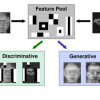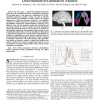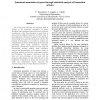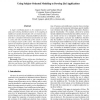524 search results - page 17 / 105 » Disease Modeling Using Evolved Discriminate Function |
CVPR
2007
IEEE
14 years 12 months ago
2007
IEEE
A major shortcoming of discriminative recognition and detection methods is their noise sensitivity, both during training and recognition. This may lead to very sensitive and britt...
TMI
2008
13 years 9 months ago
2008
In this paper, a hybrid discriminative/generative model for brain anatomical structure segmentation is proposed. The learning aspect of the approach is emphasized. In the discrimin...
DEXAW
2005
IEEE
14 years 3 months ago
2005
IEEE
One of the most elaborate and important tasks in biology is the functional annotation of genes. Biologists have developed standardized and structured vocabularies, called bio-onto...
BMCBI
2010
13 years 10 months ago
2010
Background: Accurate classification into genotypes is critical in understanding evolution of divergent viruses. Here we report a new approach, MuLDAS, which classifies a query seq...
EDOC
2004
IEEE
14 years 1 months ago
2004
IEEE
A major contributing factor to the complexity of creating and evolving distributed systems is the tangling of middleware-specific functionality with core business functionality in...




